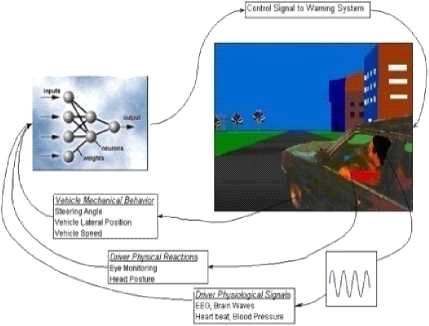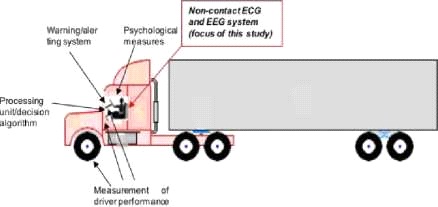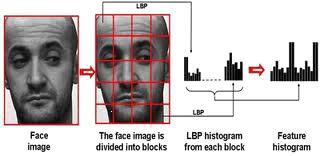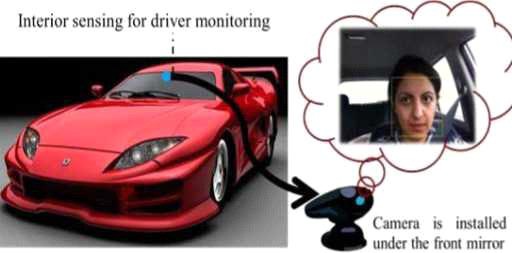





Published on Mar 01, 2025
Drivers who do not take regular breaks when driving long distances run a high risk of becoming drowsy a state which they often fail to recognize early enough according to the experts. Studies show that around one quarter of all serious motorway accidents are attributable to sleepy drivers in need of a rest, meaning that drowsiness causes more road accidents than drink-driving.
Attention assist can warn of inattentiveness and drowsiness in an extended speed range and notify drivers of their current state of fatigue and the driving time since the last break, offers adjustable sensitivity and, if a warning is emitted, indicates nearby service areas in the COMAND navigation system.
Driver drowsiness detection is a car safety technology which prevents accidents when the driver is getting drowsy. Various studies have suggested that around 20% of all road accidents are fatigue-related, up to 50% on certain roads. Driver fatigue is a significant factor in a large number of vehicle accidents. Recent statistics estimate that annually 1,200 deaths and 76,000 injuries can be attributed to fatigue related crashes. The development of technologies for detecting or preventing drowsiness at the wheel is a major challenge in the field of accident avoidance systems.
Because of the hazard that drowsiness presents on the road, methods need to be developed for counteracting its affects. Driver inattention might be the result of a lack of alertness when driving due to driver drowsiness and distraction. Driver distraction occurs when an object or event draws a person’s attention away from the driving task. Unlike driver distraction, driver drowsiness involves no triggering event but, instead, is characterized by a progressive withdrawal of attention from the road and traffic demands. Both driver drowsiness and distraction, however, might have the same effects, i.e., decreased driving performance, longer reaction time, and an increased risk of crash involvement.
Driving is a complex task where the driver is responsible of watching the road, taking the correct decision on time and finally responding to other driver's actions and different road conditions. “Fig.1”, shows the block diagram of overall system. Based on Acquisition of video from the camera that is in front of driver perform real-time processing of an incoming video stream in order to infer the driver’s level of fatigue if the drowsiness is Estimated then the output is send to the alarm system and alarm is activated. There are many methods for detecting the driver drowsiness.
The signs of the driver drowsiness are.
• Driver may be yawn frequently.
• Driver is unable to keep eyes open.
• The driver can't remember driving the last few miles
• Drift into the other lane or onto the shoulder of the road.
The term "drowsy" is synonymous with sleepy, which simply means an inclination to fall asleep. The stages of sleep can be categorized as awake, non-rapid eye movement sleep(NREM),and rapid eye movement sleep(REM).The second stage, NREM, can be subdived into the following three stages.
stage 1:Transition from awake to asleep(drowy)
stage 2:Light sleep
stage 3:Deep sleep
Driver Fatigue is often caused by four main factors: sleep, work, time of day, and physical. Often people try to do much in a day and they lose precious sleep due to this. Often by taking caffeine or other stimulants people continue to stay awake. The lack of sleep builds up over a number of days and the next thing that happens is the body finally collapses and the person falls asleep. Time of day factors can often affect the body. The human brain is trained to think there are times the body should be asleep. These are often associated with seeing the sunrise and sunset. Between the hours of 2 AM and 6 AM, the brain tells the body it should be asleep.
Extending the time awake will eventually lead to the body crashing. The final factor is a person’s physical condition. People sometimes are on medications that create drowsiness or have physical ailments that cause these issues. Being physically unfit, by being either under or overweight, will cause fatigue. Additionally, being emotionally stressed will cause the body to get fatigued quicker.
Drowsiness detection can be divided into three main categories
(1) Vehicle based
(2) Behavioural based
(3) Physiological based.
”Fig.1”, shows the three different approaches for drowsiness detection. Drowsiness detection is based on these three parameters. A detailed review on these measures will provide insight on the present systems, issues associated with them and the enhancements that need to be done to make a robust system.

A number of metrics, including deviations from lane position, movement of the steering wheel, pressure on the acceleration pedal, etc., are constantly monitored and any change in these that crosses a specified threshold indicates a significantly increased probability that the driver is drowsy.
The behaviour of the driver, including yawning, eye closure, eye blinking, head pose, etc. is monitored through a camera and the driver is alerted if any of these drowsiness symptoms are detected.
The correlation between physiological signals ECG (Electrocardiogram) and EOG (Electrooculogram). Drowsiness is detected through pulse rate, heart beat and brain information.
If car technologies are going to prevent or at least warn of driver fatigue, what symptoms does the driver give off that can be detected? According to research, there are multiple categories of technologies that can detect driver fatigue. The first is the use of cameras to monitor a person’s behaviour. This includes monitoring their pupils, mouth for yawning, head position, and a variety of other factors. The next of these technologies is voice recognition. Often a person’s voice can give off clues on how fatigued they are. The detail explanation of the underlying techniques of drowsiness detection that are mostly used for the detection purpose:
• ECG and EEG
• LBP (Local Binary Pattern)
• Steering Wheel Movement (SWM)
• Optical Detection
A. ECG and EEG

Many researchers have considered the following physiological signals to detect drowsiness: electrocardiogram (ECG), electroencephalogram (EEG). The heart rate (HR) also varies significantly between the different stages of drowsiness, such as alertness and fatigue. Therefore, heart rate, which can be easily determined by the ECG signal, can also be used to detect drowsiness. Others have measured drowsiness using Heart Rate Variability (HRV), in which the low (LF) and high (HF) frequencies fall in the range of 0.04-0.15 Hz and 0.14-0.4” Fig.2”, shows physiological signal sensing system that can be integrated into vehicles to detect driver drowsiness.
The Electroencephalogram (EEG) is the physiological signal most commonly used to measure drowsiness. The EEG signal has various frequency bands, including the delta band (0.5-4 Hz), which corresponds to sleep activity, the theta band (4-8 Hz), which is related to drowsiness, the alpha band (8-13 Hz), which represents relaxation and creativity, and the beta band (13-25 Hz), which corresponds to alertness . A decrease in the power changes in the alpha frequency band and an increase in the theta frequency band indicates drowsiness.
Local binary patterns (LBPs) have aroused increasing interest in image processing and computer vision. As a nonparametric method, LBP summarizes local structures of images efficiently by comparing each pixel with its neighbouring pixels. The most important properties of LBP are its tolerance regarding monotonic illumination changes and its computational simplicity. This technique is mostly used for detecting emotions on the face like, happiness, sadness, excitement etc. LBP (local binary pattern) is used in drowsiness detection for detecting face of the driver, it divides the image into four quadrants then the top and bottom part are detected.”Fig.3”, shows LBP extract the image from the video then the image is divided into blocks, after that LBP histogram are generated from the each block and feature histograms are formed Figure Shows the LBP technique.

Measured using steering angle sensor and it is a widely used vehicle-based measure for detecting the level of driver drowsiness. Using an angle sensor mounted on the steering column, the driver’s steering behaviour is measured. When drowsy, the number of micro-corrections on the steering wheel reduces compared to normal driving. Furlough and Graham found that sleep deprived drivers made fewer steering wheel reversals than normal drivers .To eliminate the effect of lane changes, the researchers considered only small steering wheel movements (between 0.5° and 5°), which are needed to adjust the lateral position within the lane .”Fig.5” shows the SWM based detection. In general, steering behavior is influenced by characteristics of the driving task (e.g. speed, curvature, and lane width), driver traits (e.g. driving experience), and driver states (e.g. laxness, distraction or fatigue). Drivers are constantly judging the situation ahead and applying small, smooth, steering adjustments to correct for small road bumps and crosswinds by turning the steering wheel in small increments.
Hence, based on small SWMs, it is possible to determine the drowsiness state of the driver and thus provide an alert if needed. In a simulated environment, light side winds that pushed the car to the right side of the road were added along a curved road in order to create variations in the lateral position and force the drivers to make corrective SWMs. Car companies, such as Nissan and Renault, have adopted SWMs but it works in very limited situations . This is because they can function reliably only at particular environments and are too dependent on the geometric characteristics of the road and to a lesser extent on the kinetic characteristics of the vehicle.
The most common implementation of an optical sensor system uses infrared or near-infrared LEDs to light the driver’s pupils, which are then monitored by a camera system. Computer algorithms analyse blink rate and duration to determine drowsiness. The camera system may also monitor facial features and head position for signs of drowsiness, such as yawning and sudden head nods. Depicts the use of an optical detection system.
In this eye blinking rate and eye closure duration is measured to detect driver’s drowsiness. Because when driver felt sleepy at that time his/her eye blinking and gaze between eyelids are different from normal situations so they easily detect drowsiness.”Fig.4”, shows the eye blinking based drowsiness detection. In this system the position of irises and eye states are monitored through time to estimate eye blinking frequency and eye close duration. And in this type of system uses a remotely placed camera to acquire video and computer vision methods are then applied to sequentially localize face, eyes and eyelids positions to measure ratio of closure. Using these eyes closer and blinking ration one can detect drowsiness of driver. Such a system, mounted in a discreet corner of the car, could monitor for any signs of the head tilting, the eyes drooping, or the mouth yawning simultaneously. The following figure shows the eye blink detection.
In our approach, the driver’s face is continuously captured using a video camera that is installed under the front mirror inside the car, as shown in “Fig. 5”, Next, detecting drowsiness involves two main steps to properly measure changes in facial gestures that imply drowsiness.

First, the driver’s face is detected and tracked in the series of frame shots taken by the camera. After locating the driver’s face, the next step is to detect and track the location of the mouth. We have chosen to detect and track the face prior to tracking the mouth as this makes the mouth tracking procedure more robust against false detections. After detection of the mouth, the yawning state is detected based on measuring the rate of changes in the area of the mouth contour and the aspect ratio of mouth area.
Another method currently use is the Head Position Detection. This technology simply determines the head tilt angle. When the head angle goes beyond a certain angle, an audio alarm is transmitted in the driver’s ear.
As described throughout the paper, many technologies exist to detect driver fatigue. This paper tries to look at the emerging technologies and determine the best approaches in trying to prevent the number one cause of fatal vehicle crashes. Currently, the number one selling product in the market is the market is nothing more than a reed switch to detect head angle tilt. This product is extremely limited and not very effective. The product made by BMW and integrated into their high end cars to detect driver fatigue behaviour is slightly more effective is detection but lack proper notification to warn a driver. The current market and technologies is in its infancy mode. New technologies keep emerging using different techniques.
[1] Ralph Oyini Mbouna, Seong G. Kong, Senior Member, IEEE,(2013),Visual Analysis of Eye State and Head Pose for Driver Alertnes Monitoring, (IEEE),pp.1462-1469,vol.14,USA
[2] S. Vitabile, A. De Paola, F. Sorbello, J Ambient Intell Human Comput, “A real-time non-intrusive FPGA-based Drowsiness system” Springer, pp.251-262, University of Palermo, Italy 2011
[3] Arun Sahayadhas, Kenneth Sundaraj,” Detecting Driver Drowsiness Based on Sensors A Review”, pp. 16937-16953, ISSN 1424-8220, Malaysia 2012